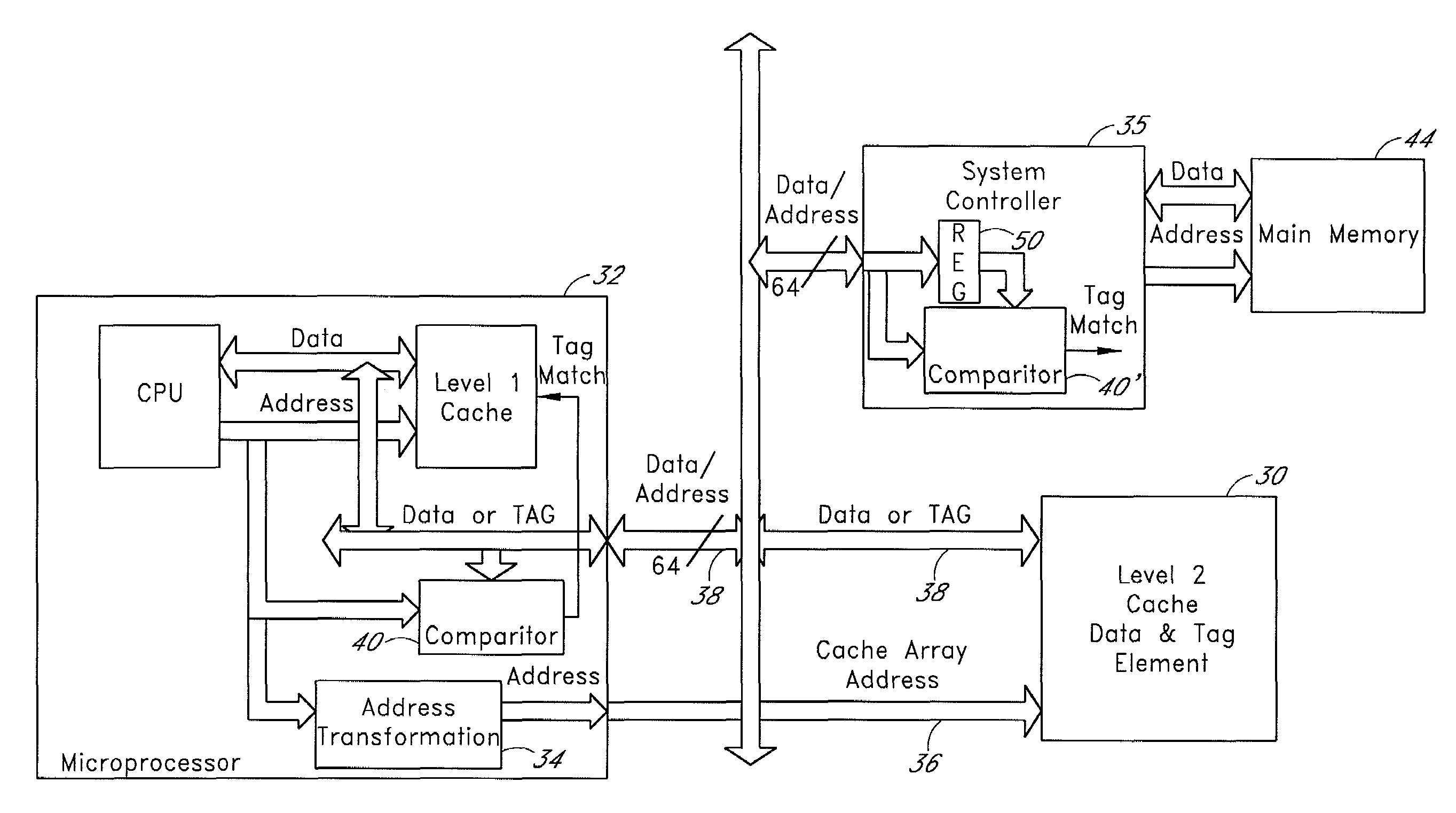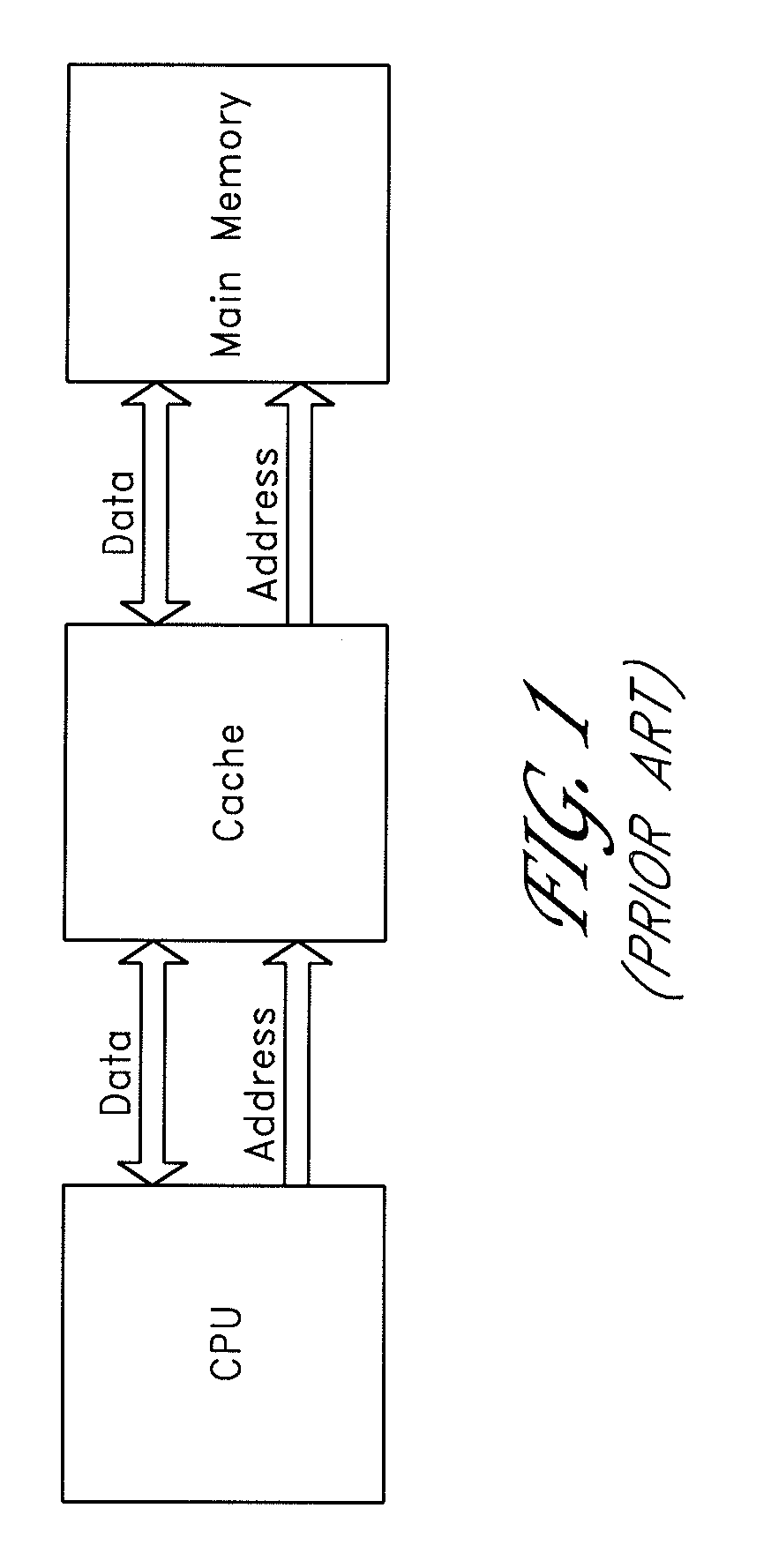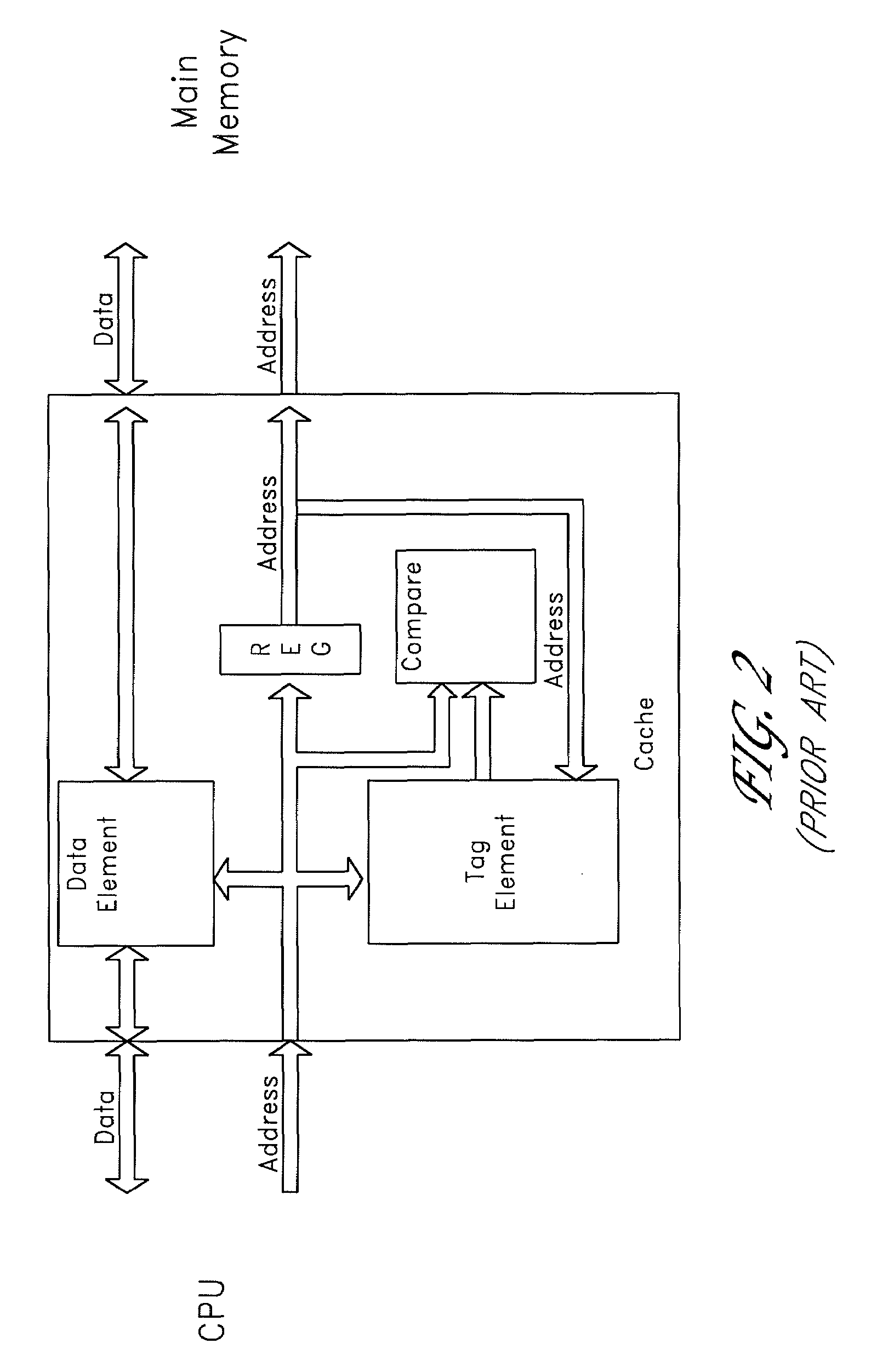Cache memory architecture and associated microprocessor design
a memory architecture and cache technology, applied in the field of cache and memory architecture, can solve the problems of reducing the potential gain of increasing the cache size, and affecting the performance of the cach
- Summary
- Abstract
- Description
- Claims
- Application Information
AI Technical Summary
Benefits of technology
Problems solved by technology
Method used
Image
Examples
Embodiment Construction
[0038]A particular embodiment will now be described in which an off-chip direct mapped cache is implemented with a single bank of SRAM memory chips. Control logic for the cache memory resides on the central processor chip and in the system memory controller. The processor provides the address used to access the cache and also supplies the address of the access to the system control chip.
[0039]The cache RAM address provided by the processor is based on the main memory address (real address) as used by the processor. Rather than simply using a range of the memory address bits as is typical to cache memory applications, an address transformation circuit changes the real address into either a tag or data address using a mapping function. The mapping function distinguishes between tag accesses and data accesses. Because addresses are mapped differently for tag and data accesses, a single memory element or array (e.g., a single bank of RAM chips) may be used for both tags and data without...
PUM
 Login to View More
Login to View More Abstract
Description
Claims
Application Information
 Login to View More
Login to View More - R&D
- Intellectual Property
- Life Sciences
- Materials
- Tech Scout
- Unparalleled Data Quality
- Higher Quality Content
- 60% Fewer Hallucinations
Browse by: Latest US Patents, China's latest patents, Technical Efficacy Thesaurus, Application Domain, Technology Topic, Popular Technical Reports.
© 2025 PatSnap. All rights reserved.Legal|Privacy policy|Modern Slavery Act Transparency Statement|Sitemap|About US| Contact US: help@patsnap.com



